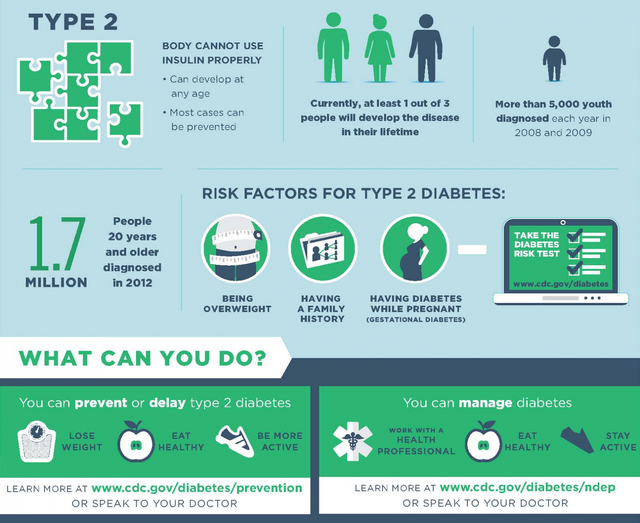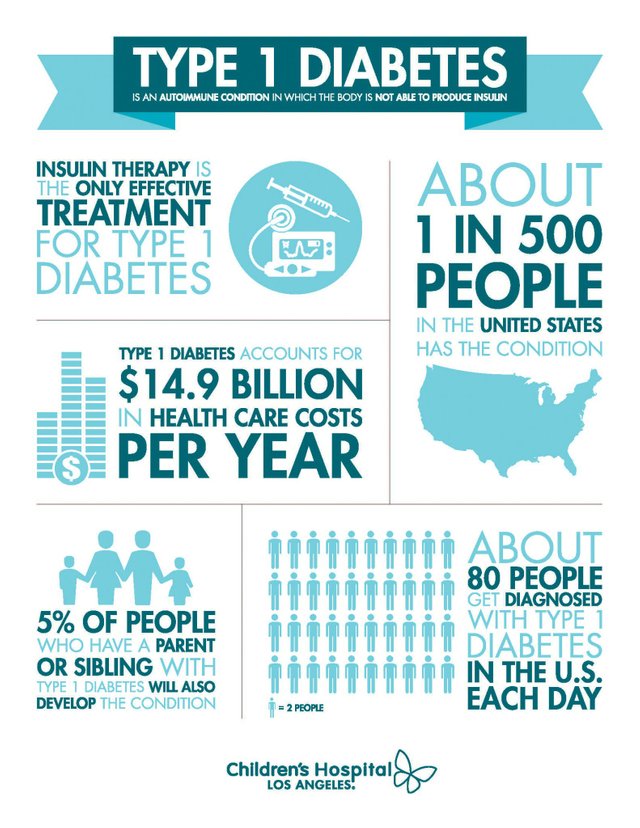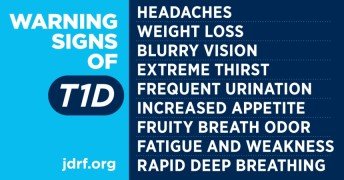The Most Important Post You'll Read During Flu Season

Photo Credit: Test One Drop Facebook
Hands up if you know what Type One Diabetes is...
If you answered, it's a disease you get from eating too much candy or sugar or because you're overweight, then I'm sorry but you're completely wrong, and honestly I can't blame you because that's what I thought too before I became a type one mom.
Let's look at some basics,

Photo Credit: Centers for Disease Control and Prevention
Type 2 diabetes is characterized as a metabolic disorder and affects most of the population with T2D. It's largely reversible and can be managed very effectively with diet and lifestyle which is great news.
For the remainder of this post, I'll talk about about Type One Diabetes which is much more serious and can lead to death if not diagnosed in time.
You might be asking, but Kate, why do you want to talk about T1D when T2D is so much more prevalent? My answer is simple, my own child was diagnosed on her 6th birthday almost 3 years ago. It was the scariest time of my life, watching my precious baby withering away in a hospital bed. I never want to see another child go through what we went through. So without further ado, here's the scoop.

Photo Credit: Children's Hospital of Los Angeles
T1D used to be called "juvenile diabetes", because it appeared so frequently in children. The truth of the matter is that you can become a type one diabetic at any age. In fact, a coworker of my husband's was diagnosed at aged 50! Why you ask?
Type One Diabetes is an autoimmune disease. This means that any sudden virus or illness can trigger the body to destroy the beta cells in the pancreas. Although the pancreas still secretes many different hormones, it's no longer able to regulate blood glucose through secretion of insulin. The patient must inject synthetic insulin 24/7 365 or face death.
How is Type One Diabetes diagnosed?

Photo Credit: JDRF.org
Many of these symptoms mimic influenza or norovirus symptoms. This is where it becomes vital to really watch and listen to your gut.
Many children are misdiagnosed and pass away unnecessarily every year. In particular, you'll want to watch for fruity breath and labored breathing. These two symptoms alone indicate a probable case of Diabetic Ketoacidosis. DKA is life threatening and requires a 911 call or trip to the ER immediately. If not treated, there is the risk of coma and/or death.
In fact, it's as simple as testing just one drop of blood. Yes, really, that's all it takes. 5 seconds on a glucometer!
Now we've talked about what T1D is, its symptoms, and causes, is there any hope at the end of the tunnel?
Yes!
T1D is no longer a death sentence. With the advent of new technology, type one diabetics can expect to live well into their octogenarian years. With careful administration of insulin, patients can live a normal life with no complications.
Technology has come leaps and bounds in the last twenty years. Patients now have the option of using pumps, pens, or syringe and vial. My own daughter uses a pump called an Omnipod. This is a tubeless pump that delivers insulin at intervals and a basal or background insulin throughout the day and night.
Currently in development are a "closed loop" system which delivers insulin and glucagon automatically with help of a CGM (Continuous Glucose Monitor), and a "smart insulin" which once administered automatically adjusts to blood glucose levels.
Type One Diabetics continue to be amazed with the new technology that appears on the market to help them manage their disease. Stay tuned for more info on new tech!
Hey Kate!
Thanks for the comment earlier. Just wanted to say as a pharmacist, I definitely agree Type I isn't a death sentence anymore. Like you mentioned there's more options than ever. There's inhaled insulin (honestly kinks are still being worked out), Dexcom (for monitoring) pumps, and even basal insulin is getting better.
Thanks for clearing up this info with the public!